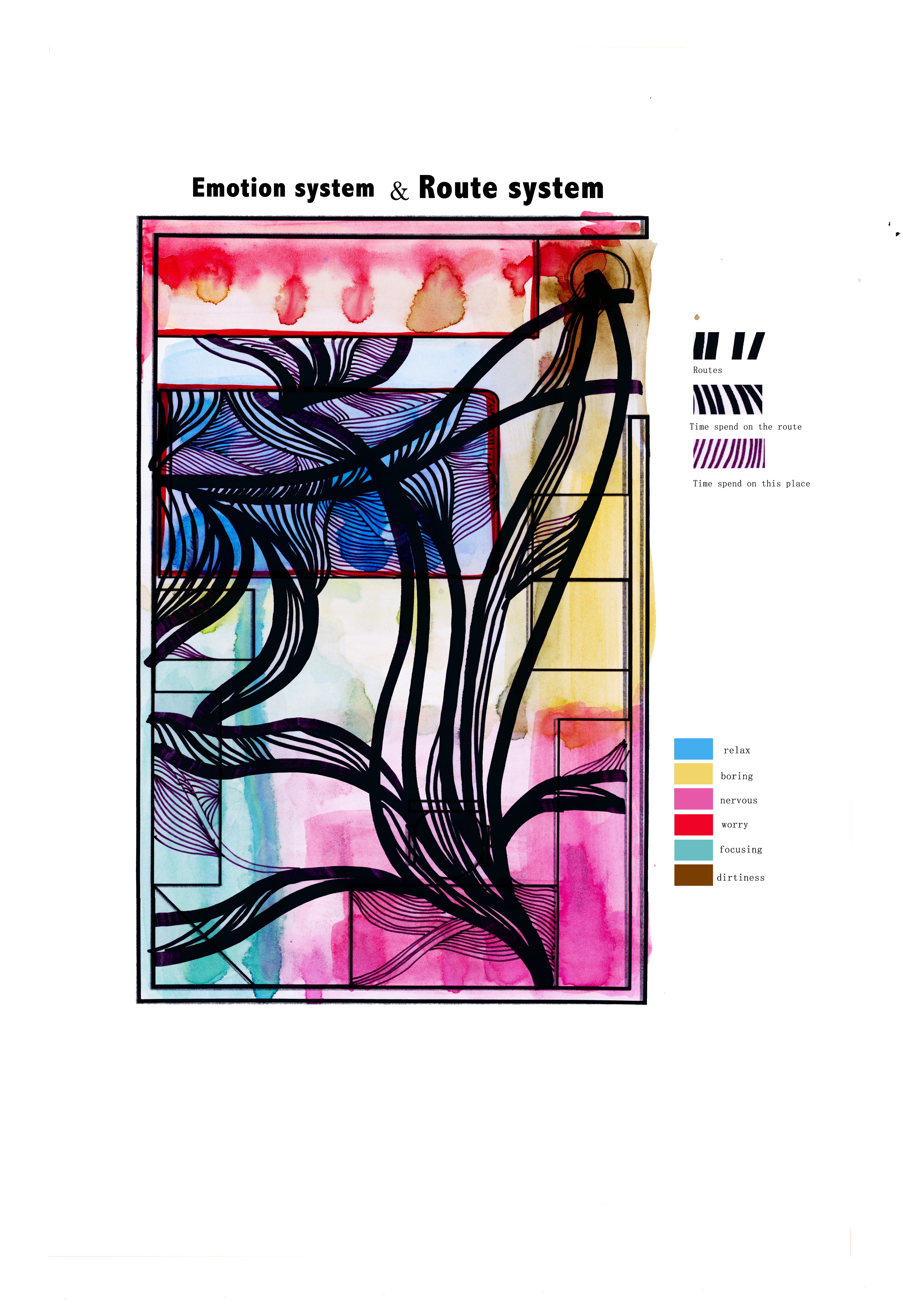First project
Maps/Diagrams of rooms
These are my first draft
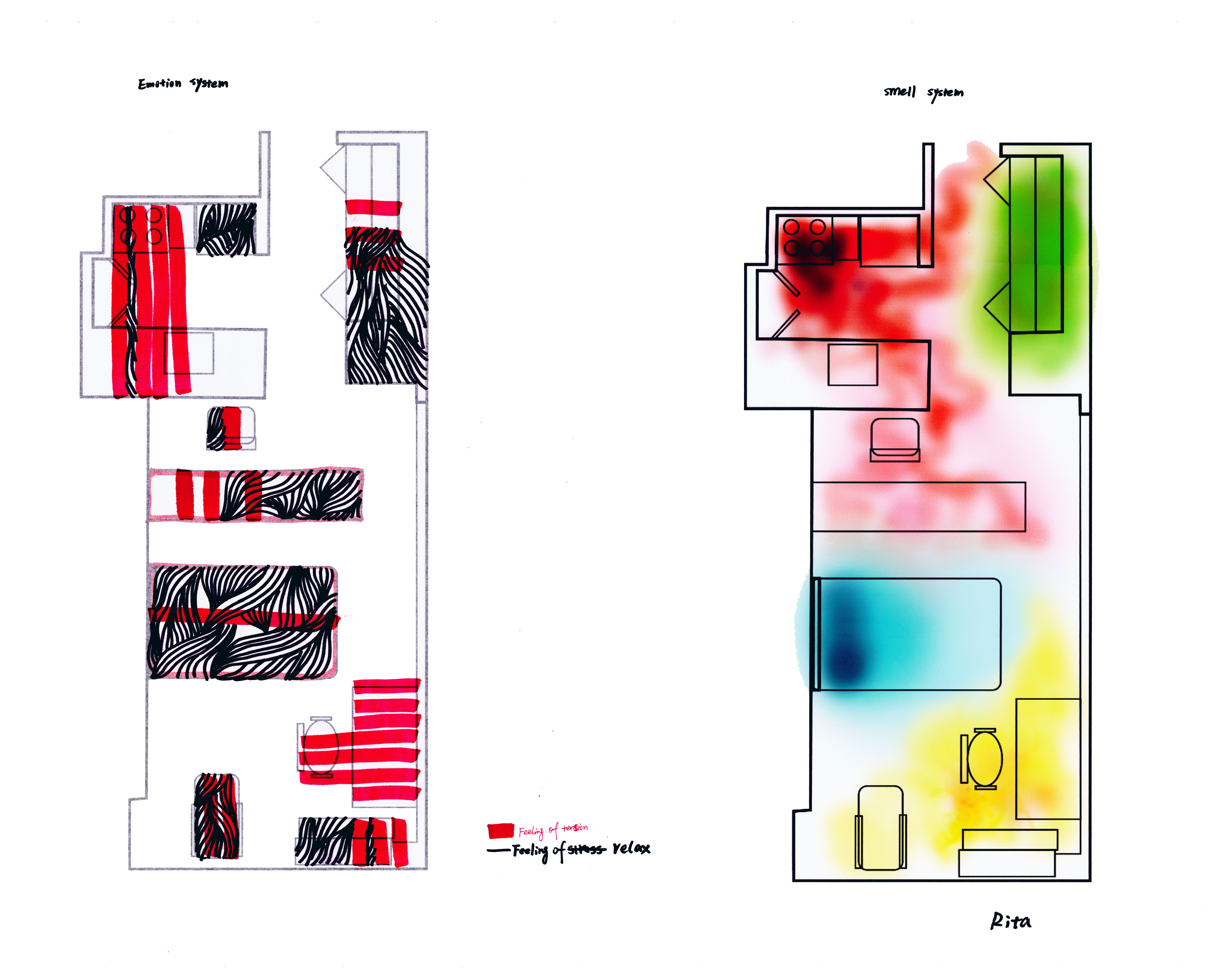
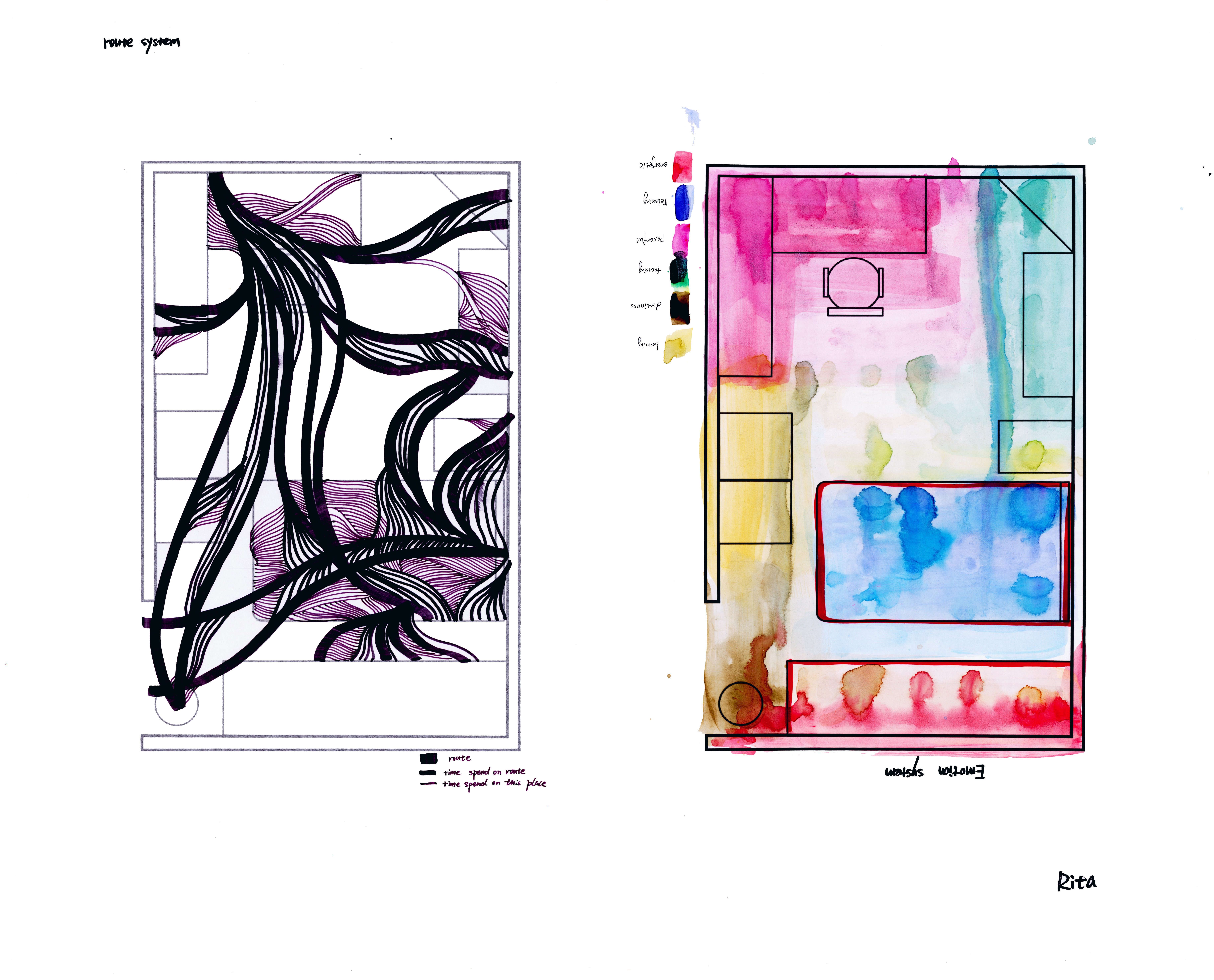 Second draft
Second draft
I made several changes
- Clarify the meaning of different elements
- Change the layout ( including titles and diagrams)
- Clarify locations of rooms.
/Room at NYC/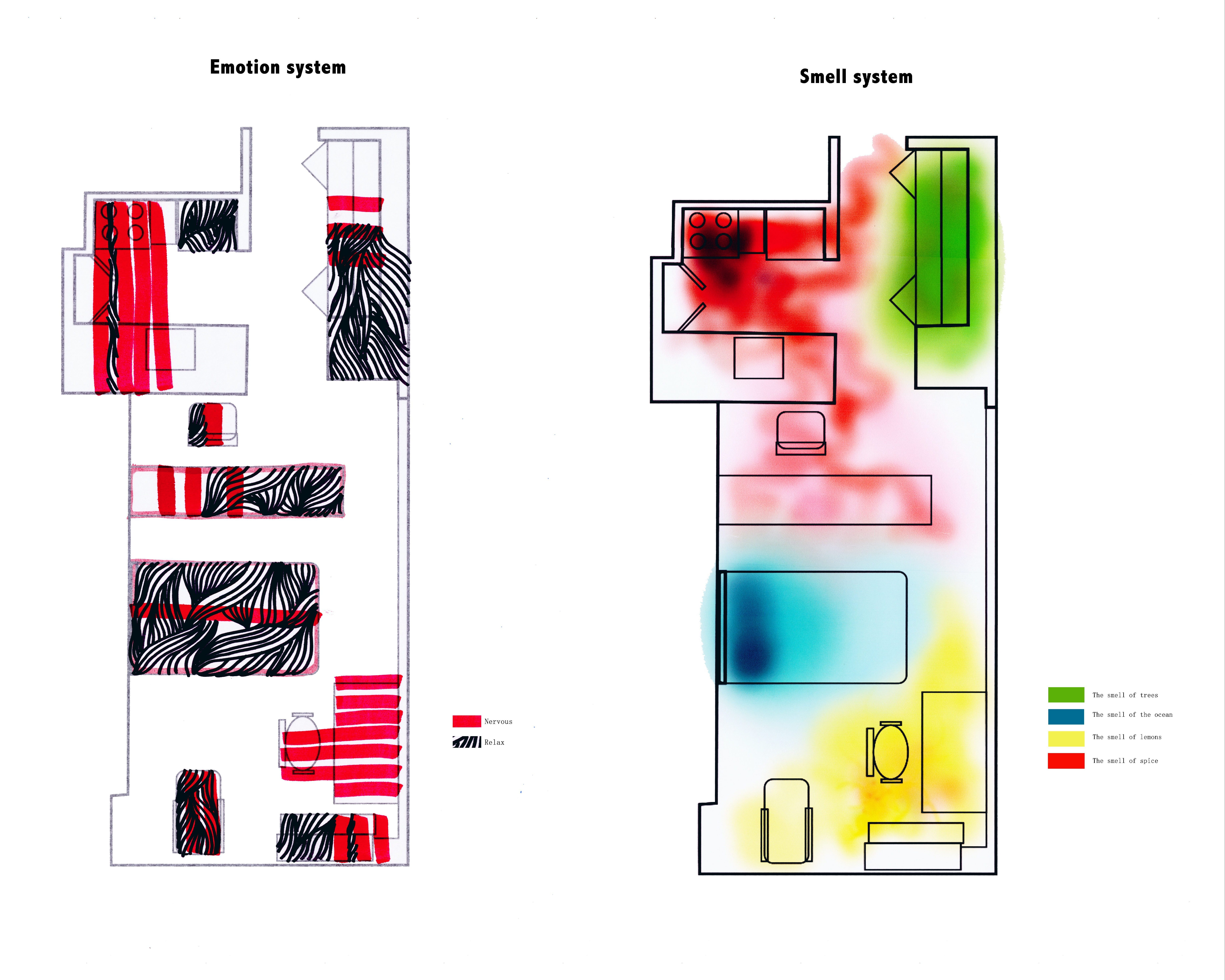
/Room at Hangzhou/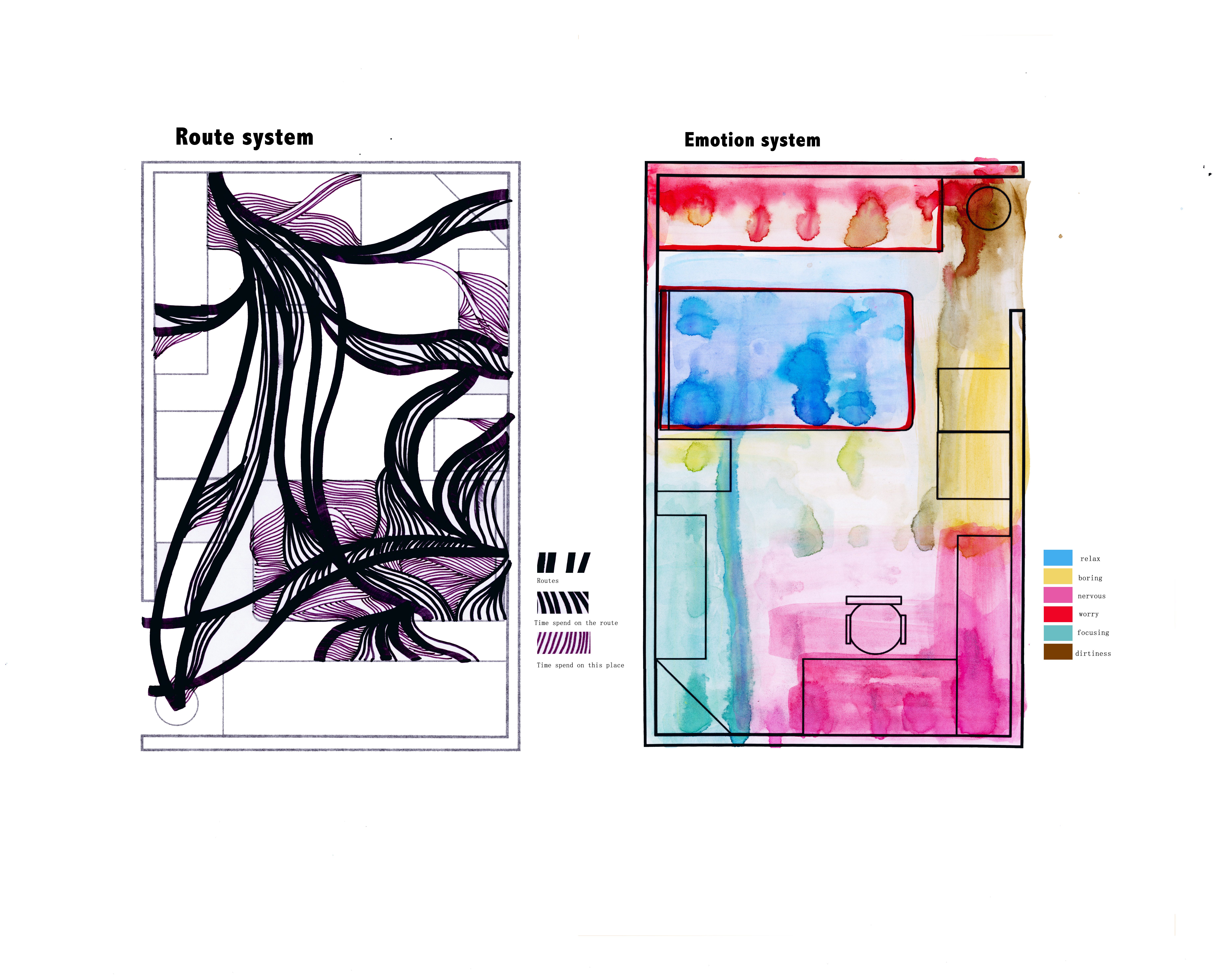
Ideas
I want to use similar elements to express different systems. I use different colors to express different smells in my room at NYC, also use different colors to represent different emotions in my room at Hangzhou. The darker places means the feeling or the smell being more fierce. I use a variety of ways to express colors, like using digital ways and water color. Colors blend together at their edges because I think no mater feelings or scents, they are always combined. For lines, the amount of lines represent different things. Lines in my NYC’s room diagram means the level of my emotion, and audiences can compare the level of my feelings clearly. Also in my Hangzhou’s room diagram, curves are in different thickness and amount, because people can distinguish the meaning of each easily in this way.
At last, I found an interesting result when I compared my room at Hangzhou and NYC. I found that I place furnitures in similar places in these two rooms unconsciously. I did this because I have strong emotional connection with my old room, and I am already be familiar with the placement of furnitures. Therefore, I use the red pen to mark the similarities between these two diagrams, also point out the connection between these two rooms.
/Room at Hangzhou/
/Room at UYC/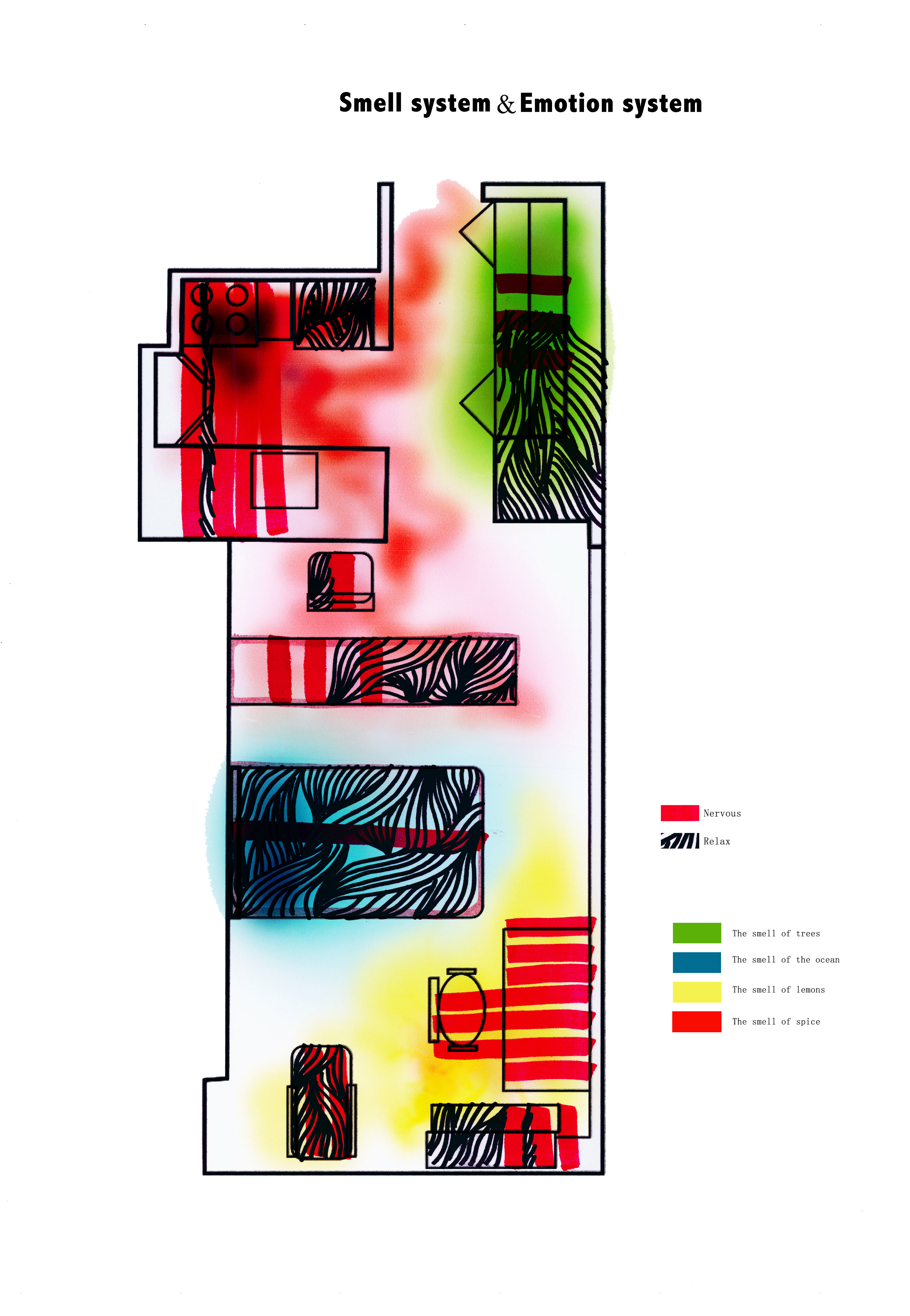
At last, I wanted to make the diagram be more diverse, so I combined two diagrams at one picture.
Comments about Arakawa’s work
The diagram that I choose is about lemon. The first reason I choose this picture is because Arakawa’s work usually doesn’t be so colorful and abstract like this. There are many questions under the painting, one of them is “How not to think in terms of estimation but to deal with ambiguous zones as basic units”. I think he really obscured the boundaries and standards for people to observe things. Lemon as a object has many possibilities, but we won’t observe or think about it carefully. We don’t regard things about lemon as a accurate standards normally, I think because we “believe” it is not a unit nor a standard. I think he made this diagram not just to point out the possibilities about lemon, but also question audiences’ “believe”, and let them think about the boundaries which limit their imaginations.
